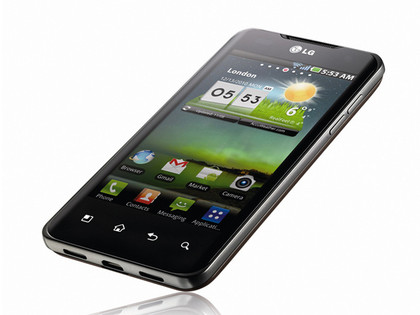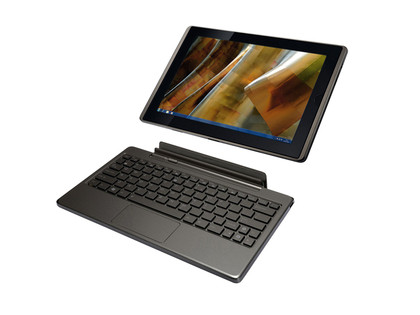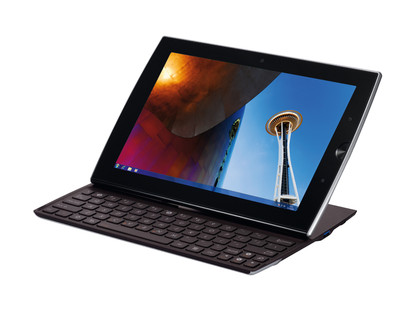The rise in apps
Mobile device applications, or apps, have replaced several standalone devices: an iPod Touch or Android mobile phone can be a perfectly good digital camera, satellite navigation system, video recorder, PDA or handheld games system. If it's possible to replicate an existing device in the form of an app, then sooner or later somebody will do it.

There are limits to what a mobile device can do - the small form factor of a mobile phone means its camera will never be as good as a full-frame digital SLR with a decent lens - but the combination of portability and good-enough technology means that for many people, a mobile phone is a perfectly acceptable replacement for a point-and-shoot camera.
So what's next? We're beginning to see mobile ticketing applications - many airlines now accept mobile phone boarding passes, while Tesco has an app that turns a phone into a Clubcard that you can scan at the till.
Near Field Communications (NFC) technology, as featured in forthcoming Nokia and Android phones could make such mobile applications even simpler. The short-range wireless technology could let your phone act like an Oyster card or a credit card, with a quick wave of the phone paying for your newspaper or train ticket.
In the longer term, NFC-enabled devices could become the keys to your house or to your car, or could act as identity cards or passports. The downside is security: it's bad enough losing your phone now, but imagine if it was also your front door key, your car's starter button, your Glastonbury ticket and your wallet.
Today's crop of smartphones often include remote wipe facilities so you can erase your phone should it go missing, but we'll need more robust forms of protection if our phones become even bigger parts of our lives.
Sign up for breaking news, reviews, opinion, top tech deals, and more.
Apple has some ideas: in a US patent application, the firm describes features including voice and facial recognition, retina or fingerprint scanning, and even DNA analysis to ensure only you can access your mobile device.
Enter the Atrix
Motorola has a question for us: with mobile processors exceeding 1GHz and smartphone specs looking increasingly like those of netbooks and small laptops, do we really need standalone computers any more?
Its ingenious alternative is the Atrix, a mobile phone that becomes a PC when you dock it. Simply plug your phone into the appallingly named Lapdock and the phone thinks it's a laptop, with a dedicated user interface replacing the phone's UI until you unplug it.
It's not a new idea - Palm's ill-fated Foleo was based on similar thinking, while 2008's Celio REDFLY turned Windows Mobile and BlackBerry phones into netbooks - but what's different about the Atrix is that smartphones are finally powerful enough to appeal to mainstream users.
Motorola isn't the only firm that thinks mobile devices could replace netbooks and notebooks. Asus's Eee Pad tablet computers come in a variety of form factors.

The Eee Pad Transformer is an Android tablet with a split personality: on its own it's a tablet, but if you slide it into the (optional) docking station, it's a netbook with a 10.1-inch display and double the battery life (16 hours compared to eight in tablet mode).
Another Asus tablet, the Eee Pad Slider, takes a different approach: instead of a separate docking station, it has a hidden keyboard that slides out and elevates the screen when you want to type.

Despite the hefty specifications - the Atrix and the Eee Pads boast dual-core Tegra 2 chips and between 512MB and 1GB of RAM - you're not going to use these machines for 3D modelling, music creation or scientific number crunching, but they're perfectly decent alternatives to netbooks and ultra-portable laptops.
Their main drawback is the lack of storage: the Atrix has 16GB of on-board storage plus room for another 32GB via a microSD card, and even the most expensive Eee Pads have 64GB. Even 64GB is tiny compared to a hard disk-based netbook, but the lack of onboard storage might not be a problem. Just store your stuff in the cloud instead.
Stream of consciousness
Most mobile devices are based around solid state storage, not traditional hard disks. Solid state storage is more compact, runs more quickly than and draws less power than a hard disk, but there are two big disadvantages: solid state storage doesn't come in the huge capacities we've come to expect from hard disks, and solid state storage is much, much more expensive.
64GB solid state drives start at around £80, rising to over £2,000 for 1TB drives. By comparison, 1TB SATA hard disks cost around £40.
The price of solid state storage will fall, and storage capacities will increase, but for the foreseeable future mobile devices will be stuck with much less storage than desktops.
Cloud computing offers a solution to that. By storing files on remote servers and streaming media on demand, you negate the need for lots of local storage. Inevitably, the real world is a bit more complicated.
UK phone providers have been quick to impose limits on bandwidth. T-Mobile has just cut its data allowances from 3GB per month on some Android devices to a less exciting 500MB, and 3G coverage remains patchy outside large urban areas. 3G's successor, Long Term Evolution (LTE), is still two to three years away and won't be as widespread as 3G for a while yet.
In the UK, cloud-based tools are fine for simple document editing and music streaming, but they use networks that weren't designed to cope with lots of people streaming large amounts of data. As a result, low bitrate tasks like document editing work well, but high-bitrate applications like streaming video are considerably less impressive.
That's not necessarily a problem, because few of us need to stream HD video on the move. High bitrate, cloud-based services are best left to the home and the office, where bandwidth is plentiful and congestion isn't such an issue. The more we expect our mobile devices to do, the more we'll need different ways of interacting with them. Slide-out keyboards are great when you're sitting down, but not much use when you're walking down the street.
Devices already boast a number of interfaces, with real and virtual keyboards being supplemented by more interesting ideas. Swype's scribbles can be quicker than typing, especially when you're on the move, and we're already used to multi-touch pinches and swipes to interact with photos, navigate web pages or move around maps.
Cameras are used as input devices - Google Goggles uses it to search, Word Lens uses optical character recognition to translate printed text, and augmented reality applications overlay data on camera footage with a little help from phones' GPS and compasses. We could even see Kinect-style gestural interfaces.
The hopelessly named d'strict, Samsung's user experience consultancy, showed off a gesture-sensing hologram last summer, with a 3D image reacting to users' movements. Apple has filed patents describing a holographic system combining an auto-stereoscopic display with facial tracking to deliver what seems to be a 3D hologram from a mobile device, and LG is preparing to unveil a production version of the glasses-free 3D mobile display it showed off at this year's CES.
People power
The most interesting thing about mobile devices isn't the technology, it's the people buying them. 80 per cent of the world's population isn't online yet, and as they come online a significant number of them will do so via mobile devices.
In January, Ericsson predicted that worldwide mobile internet users would reach 1 billion by the end of 2011, rising to 3.8 billion by 2015. Smartphone prices are plummeting, replacing the basic devices available on the cheapest contracts, and operators are building faster, smarter mobile networks.
In the UK, 75 per cent of the phones Carphone Warehouse sells are smartphones; as prices drop, that proportion will increase. Bill Gates once dreamed of a computer in every home; soon, there will be a connected computer in the pocket of every person on the planet. If you thought the PC revolution was impressive, you ain't seen nothing yet.
- 1
- 2
Current page: The unstoppable rise of apps
Prev Page How smartphones and tablets are taking over